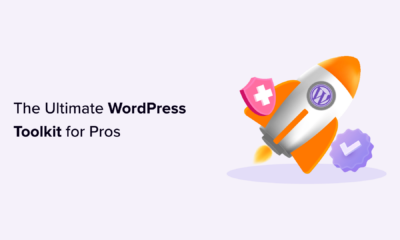Key takeaways
-WordPress powers 478 million sites, dominates the CMS niche
-WooCommerce is used by 9.2% of all e-commerce sites
-It is built with search engines in mind
-Responsive website themes and designs are built into it
-You don’t need to know a programming language
-It’s not the best choice if you have very complex requirements
According to a NetCraft report in August 2024, there were 1.1 billion websites online, ranging from social networks and stores to company sites and blogs. 43.5% of all sites run on WordPress, which comes to around 478 million.
This system also dominates the CMS niche market with a share of almost 63%. It is followed by Shopify and Wix with just 6.5% resp. 4.2%. Almost a third of websites do not use a recognized CMS.
More than 30,000 WordPress themes and 70,000 plugins are available. According to the latest data, 13,292 websites use Hello Elementor, which has a 1.33% share. Divi and Astra come next, appearing on 10,183 and 10,155 sites.
WooCommerce, the CMS’s e-commerce plugin, leads the market with a 36.42% market share, ahead of Shopify and Custom Cart with 18.54% and 13.24%.
In September 2024, WooCommerce’s role in e-commerce remains profound. It is used by 9.2% of all e-commerce sites (more than 101 million sites) and 13.2% of those with a known CMS. There’s also great WordPress hosting for WooCommerce.
Technological advantages
The first and main benefit of WordPress is that it is built with search engines and SEO in mind. Each post gives you important SEO information like the meta title, meta description, slug, how many characters they should be, and tips on how often keywords should appear in the text. WordPress has tips for external and internal links, images in the text, the keyphrase in the introduction, and more, all of which are critical for rankings.
It features links to posts with in-depth SEO information. The green dot is a clear and simple sign that you’ve done everything right. Red means your text needs more search engine optimization, and WordPress makes suggestions for improvements. Orange means your text is ok for SEO but not great.
The only reason you wouldn’t care about SEO is if you were creating a website for yourself, which most people aren’t. Your website should be easy for Google, Bing, and Yahoo to crawl through. This comes built-in with WordPress. Potentially, you can get a lot of search engine traffic.
Responsiveness and an excellent frontend and backend balance
Responsive website themes and designs are built into WordPress. Most of them adjust to all kinds of mobile screens automatically. WordPress websites have distinct advantages over websites built manually using HTML, JavaScript, or CSS. The front end often looks great, but clients and developers can forget to invest effort and time in the back end, resulting in a poorly held-together site. You don’t need to know a programming language to create a site with WordPress. Once you have, anyone you give permission to can log in and post. No technical background is needed.
WordPress might not be the best choice if you have very complex requirements. If content management is not your leading consideration, you would be better off with other options, like vue.js and Laravel or a similar framework.
Finally, imagine manually coding an e-commerce platform: the shop, the products, user logins, and payment gateways. If you have the skills, it can take weeks. In comparison, creating a working e-commerce site on WordPress takes a few hours.
Recap
-There are over 30,000 WordPress themes and 70,000+ plugins
-WordPress is SEO-friendly by default
-You can set up an e-commerce platform in hours



















